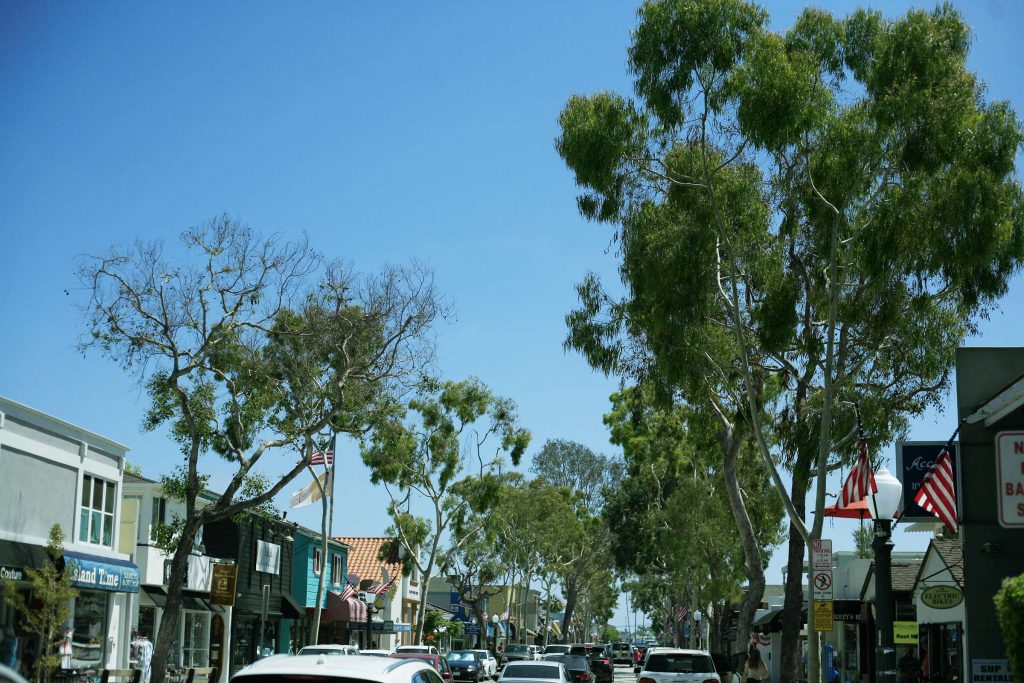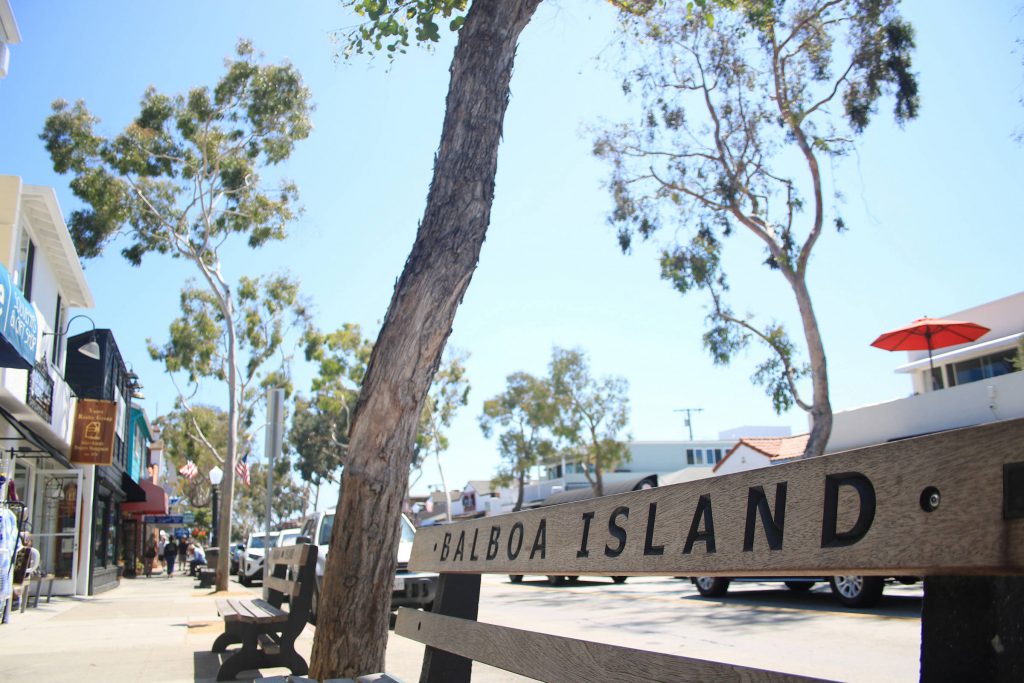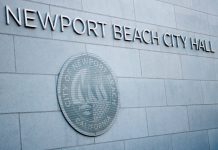
— Photo by Sara Hall ©
Following a heated discussion this week, a city commission unanimously approved a mixed bag of recommendations for the trees that line Marine Avenue on Balboa Island.
The Parks, Beaches and Recreation Commission met Tuesday and the most substantial item on their agenda, by far, was a special tree replacement request for several of the trees that line the iconic street.
After more than three hours, PB&R voted 7-0 to remove and replace the four trees recommended in the staff report at 210, 217, 224, and 315 Marine Ave.
Commissioner Walt Howald suggested the removal of just two trees in his motion, but an amendment by Commissioner Diane Daruty for removal of all four was accepted and approved unanimously.
Arborist Greg Applegate, who consulted for the Balboa Island Preservation Association and wrote up a report, said he only fully agrees with removal of two trees recommended by city staff.
But at the urging of City Arborist Kevin Pekard, Commissioners ultimately agreed that there were four that called for removal.
Also included in PB&R’s recommendation, which will be forwarded to City Council, is the removal and replacement of three “test” trees of a different species.
The PB&R recommendation also included: Replant the five empty wells; conduct level three testing on the remaining six trees, administered by an independent consultant that both the city and BIPA agree on; replacement of only lemon-scented eucalyptus gum trees and must be within 90 days; install steel grates on newly planted trees; water and maintained, which BIPA will be notified of and allowed to monitor, and look into utilizing water hoses by merchants; and use 24-inch box trees for planting.
Howald added one last amendment of “everyone be happy.”

— Photo by Sara Hall ©
That is something they “always strive for when possible,” added Public Works Director Dave Webb added on Thursday.
Staff is looking to advise the Council of the action at their Sept. 10 meeting, Webb confirmed in an email on Thursday.
On Tuesday, Commissioners emphasized that public safety is the top priority.
She’s the one voting on the matter, so she feels accountable for something that may cause someone to get hurt, Daruty commented.
Members of the commission also stressed that they are voting on the trees, not “the project,” referring to the Marine Avenue rehabilitation plan that has caused controversy in the community.
They all want trees, but they also don’t want anyone to get hurt, Commissioner Laird Hayes noted.
“We all want the same thing,” Hayes said.
Residents highlighted the unique charm the trees create along the street. Several public speakers also pointed out that a few City Council members recognized the value of the trees and agreed that investing time and money was worth it.
Many speakers said that the trees were healthy and that the city’s consulting arborist over-exaggerated the risks.
Pekard argued that a healthy tree could still be unstable. The level three testing could cost approximately $1,000 per tree, Pekard confirmed.
He also noted in his presentation that planting in fall or winter is ideal.
Arborist reports on the trees have come to competing conclusions.
“What we have here is a failure to communicate,” Applegate said Tuesday.
He named several reasons backing his position: Leaning trees are not a hazard, there is no decay, lemon scented gums have good characteristics and rarely fail, several the city-deemed hazardous trees are recoverable, and more.
In Walt Warriner’s report, he noted that there are root and trunk issues, as well as suspected decay and fungus. He deemed 27 trees at high risk and 10 as moderate.
Residents, the city, and arborists have been arguing over the fate of the lemon-scented gum eucalyptus trees for months, but it came to a head during an Aug. 13 Council study session.




